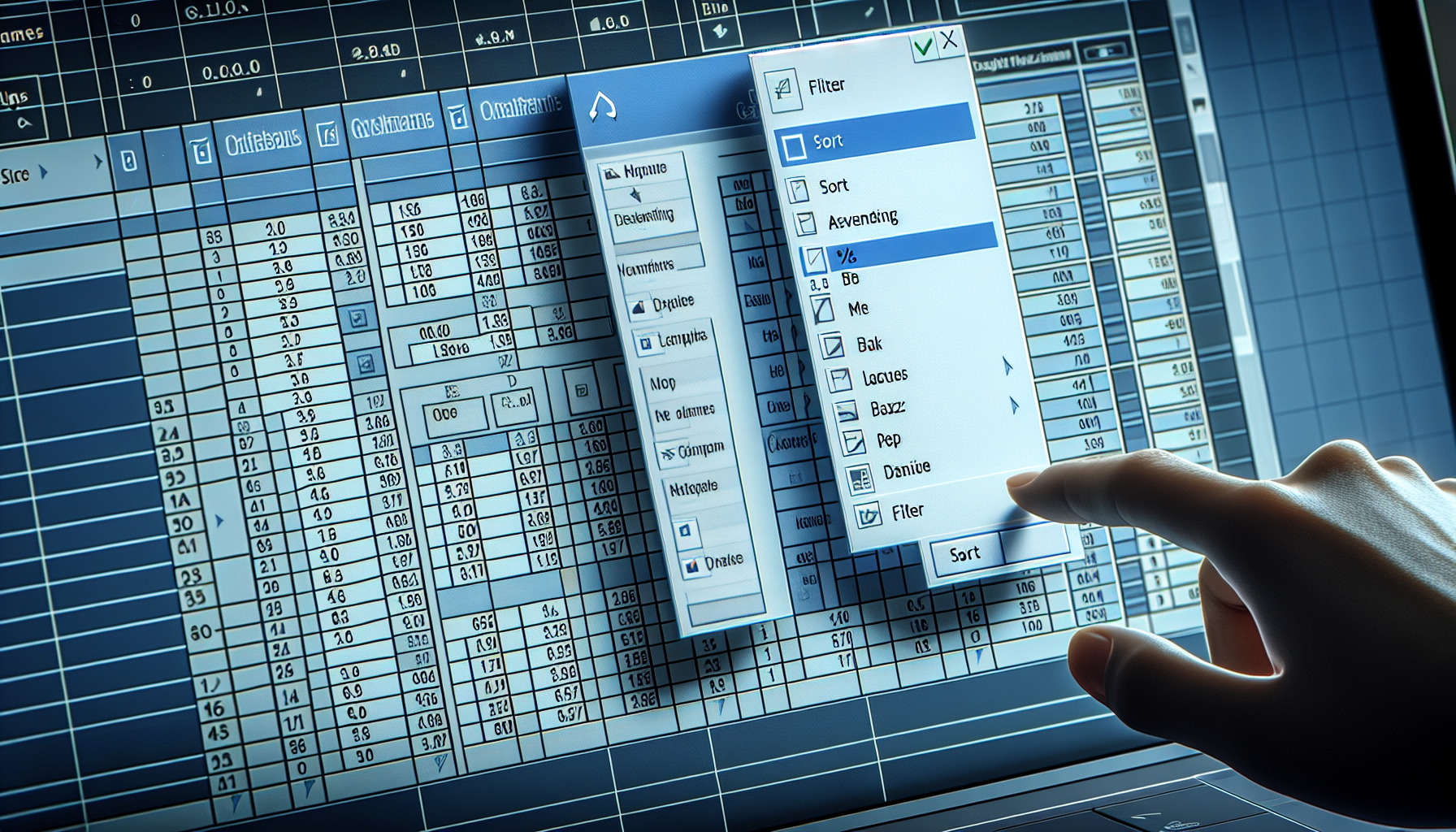“`html
Understanding Excel VBA ‘Filter’ Command
Excel VBA (Visual Basic for Applications) offers powerful tools for automating tasks and manipulating data. Among these tools, the ‘Filter’ command stands out for its ability to swiftly filter data sets according to various criteria. This blog post will provide a comprehensive guide to the ‘Filter’ command, including its basic explanation, usage, and examples.
What is the ‘Filter’ Command in Excel VBA?
The ‘Filter’ command in Excel VBA is used to filter a range of data based on specified criteria. This command helps to streamline data analysis by allowing users to focus on subsets of data that meet particular conditions. Whether you’re working with large datasets or simply want to refine your data, the ‘Filter’ command is an indispensable tool.
Basic Syntax of ‘Filter’ Command
The basic syntax of the ‘Filter’ command in VBA is as follows:
Filter(SourceArray, Match, [Include], [Compare])
- SourceArray: The array containing the data you want to filter.
- Match: The value or pattern you are looking for.
- Include: Optional. If True, the function returns elements that match the criteria; if False, it returns elements that do not match.
- Compare: Optional. Specifies the type of comparison (e.g., binary or textual).
How to Use the ‘Filter’ Command
Using the ‘Filter’ command involves specifying the array and the criteria for filtering. Below is a simple example to demonstrate how the ‘Filter’ command can be used in an Excel VBA script.
Sub FilterExample()
Dim DataArray As Variant
Dim FilteredArray As Variant
' Define the data array
DataArray = Array("Apple", "Banana", "Cherry", "Date", "Grape", "Lemon")
' Apply the filter to find fruits that contain the letter "a"
FilteredArray = Filter(DataArray, "a")
' Output the filtered array
Dim i As Integer
For i = LBound(FilteredArray) To UBound(FilteredArray)
Debug.Print FilteredArray(i)
Next i
End Sub
In this example, the ‘Filter’ command is used to find all elements in DataArray that contain the letter “a”. The filtered results are then printed to the Immediate Window in the VBA editor.
Practical Examples of ‘Filter’ Command
Let’s explore a more practical example where we filter a list of numbers to find those that are greater than a specified value.
Sub FilterNumbers()
Dim NumArray As Variant
Dim FilteredNums As Variant
' Define the array of numbers
NumArray = Array(1, 23, 45, 67, 89, 100, 34, 21)
' Apply the filter to find numbers greater than 50
FilteredNums = Filter(NumArray, 50, False, vbBinaryCompare)
' Output the filtered numbers
Dim i As Integer
For i = LBound(FilteredNums) To UBound(FilteredNums)
Debug.Print FilteredNums(i)
Next i
End Sub
In this script, the ‘Filter’ command is used to exclude numbers less than or equal to 50 from the array. The vbBinaryCompare ensures a binary comparison is used.
Conclusion
The ‘Filter’ command in Excel VBA is a versatile tool for data manipulation and analysis. By understanding its syntax and usage, you can efficiently filter data according to various criteria. For more in-depth VBA tutorials, check out our VBA Tutorials page.
For further reading on Excel VBA functions, you might find this official Microsoft documentation helpful.
“`

